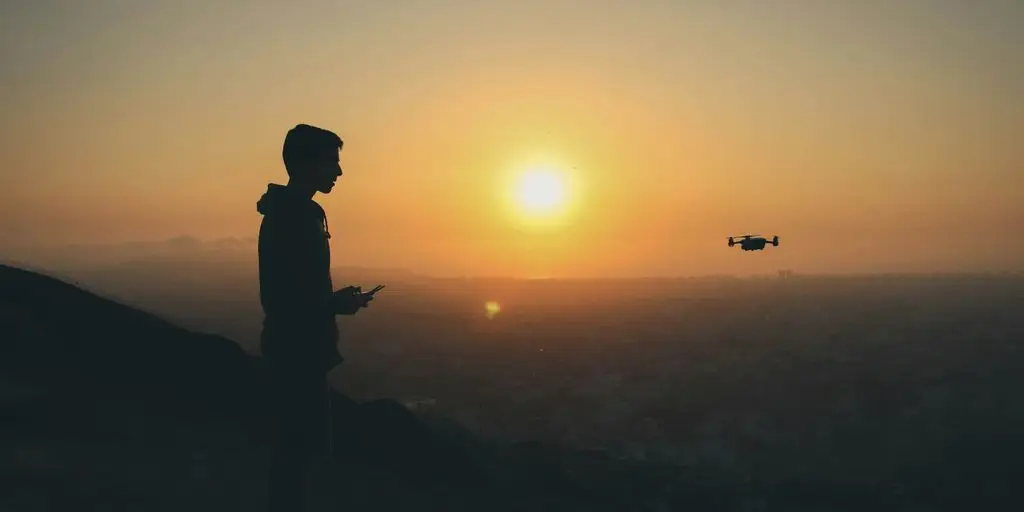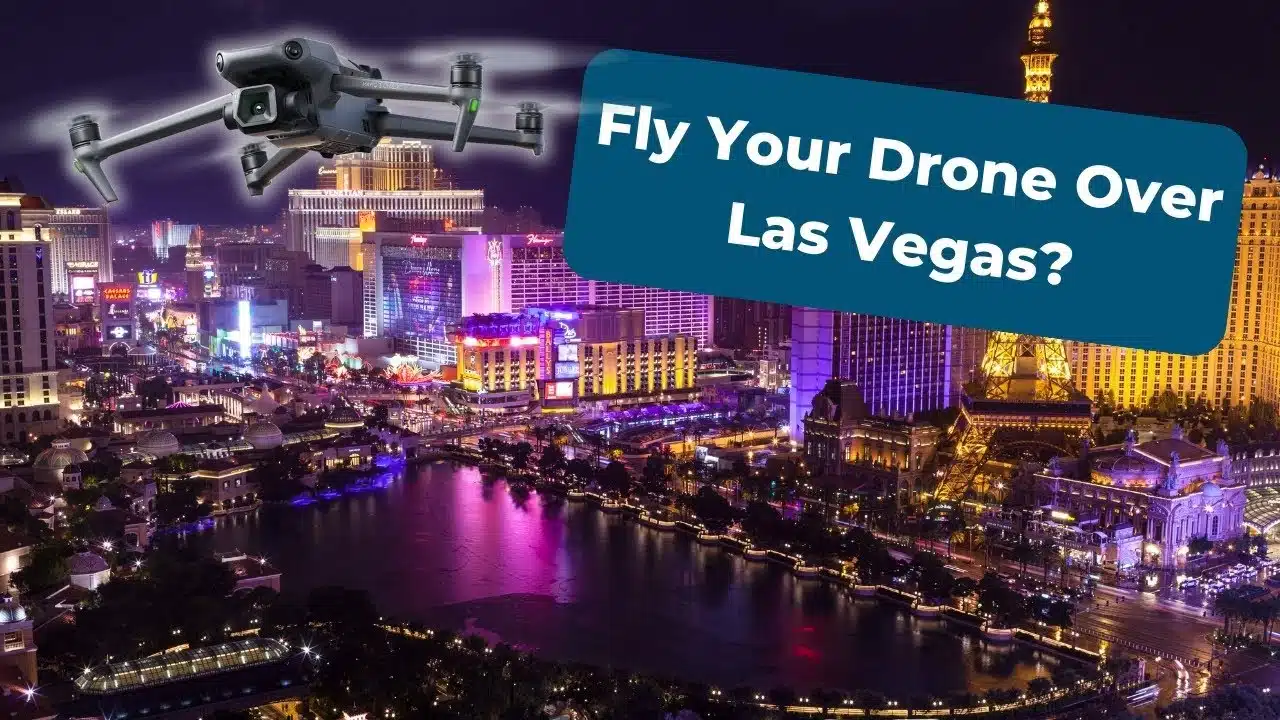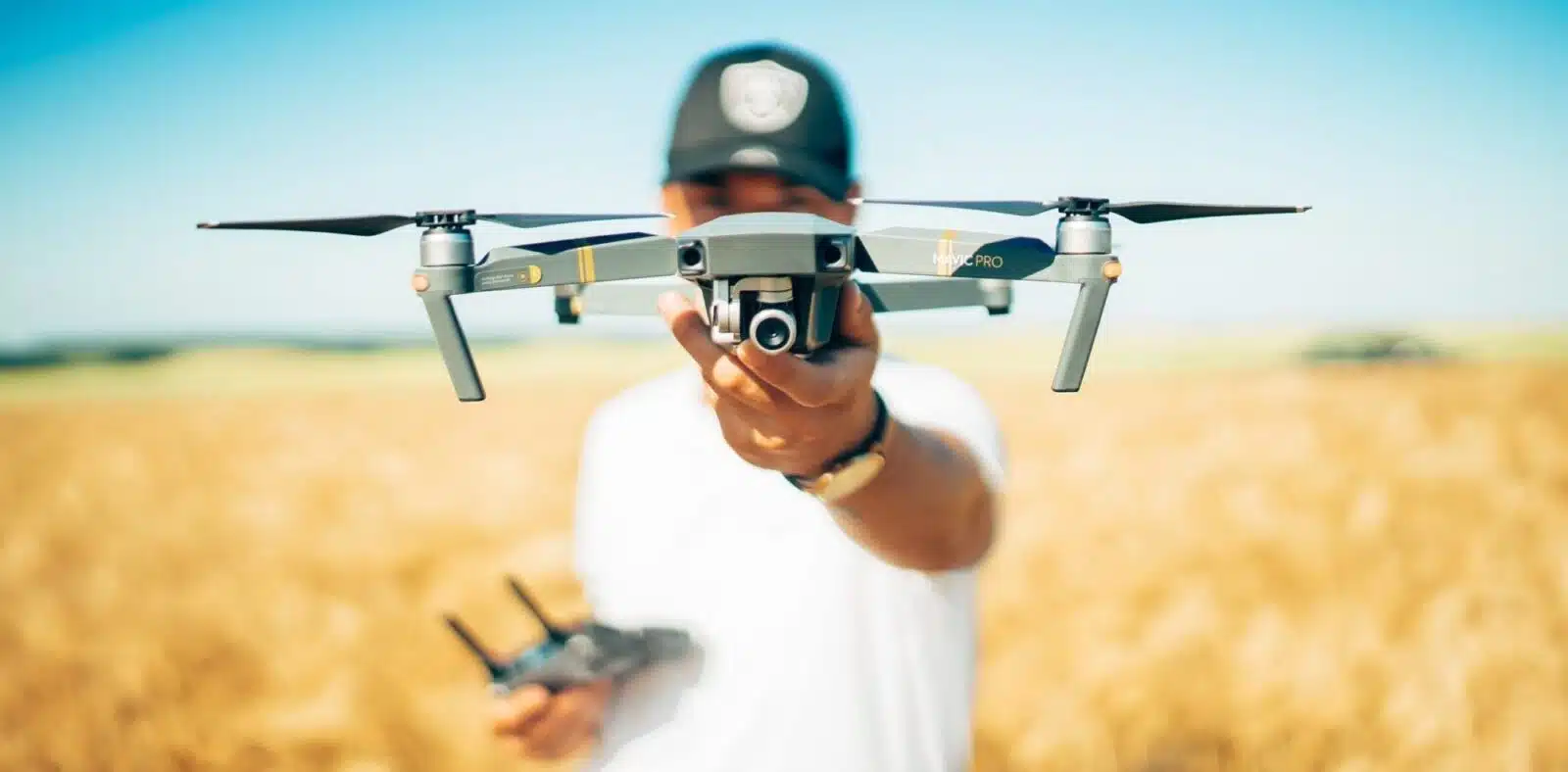
6 Things to Know About Flying a Drone at Night. Flying a drone at night can be an exciting adventure, but it comes with challenges and rules. Understanding the essentials will help ensure a safe and enjoyable experience. Here are six critical things you need to know before taking to the skies after dark.
Key Takeaways
- If you are a hobbyist, you can fly a drone at night without a license, but you must follow safety rules.
- Always check that your drone, remote, and phone batteries are fully charged before flying at night.
- To keep your drone safe in the dark, use anti-collision lights that can be seen from a distance of at least three miles.
- Plan your flight carefully, including knowing the area and potential obstacles you might not see at night.
- Manage your drone’s battery life, as cold weather can reduce performance.
1. Legal Requirements for Night Flying

Flying a drone at night is allowed in the United States, but there are essential rules to follow. Both commercial and recreational drone pilots must ensure their drones are equipped with anti-collision lights that can be seen from a distance of at least three miles. This rule was established to enhance safety and compliance with the Federal Aviation Administration (FAA) regulations.
Key Points to Remember:
- Anti-Collision Lights: All drones flying at night must have lights visible from a distance of three statute miles.
- Training Requirements: Pilots certified before 2021 must complete new online training to understand the updated night flying rules. New pilots will learn these guidelines during their initial training.
- Night Definition: The FAA defines “night” as starting 30 minutes after sunset and ending 30 minutes before sunrise, known as civil twilight.
Important Considerations:
- Local Regulations: Always check local laws, as they can vary by state or country. For example, in Canada, special licensing is required for night flying.
- Visibility: Ensure your drone is visible to you and others in the area to avoid accidents.
- Preparation: Familiarize yourself with the flying area during the day to identify potential hazards that may be harder to see at night.
Remember, safety is the top priority when flying at night. Always follow the rules and prepare thoroughly to ensure a successful flight.
2. Checklist for Night Flight Preparation
A thorough checklist is essential to ensure safety and efficiency when flying a drone at night. Here are some key points to consider:
- Check the Weather: Always monitor the weather conditions before your flight. Pay attention to wind speeds and precipitation, as these factors can significantly impact your drone’s performance.
- Battery Management: Ensure your drone’s batteries are fully charged and maintained. Cold weather can reduce battery life, so consider bringing extra batteries. Monitor battery levels during the flight, mainly since visibility is limited at night.
- Lighting Setup: Make sure your launch and landing areas are well-lit. Use bright LED lights to enhance visibility and prevent shadows from obstructing your view.
- Visual Observer: Partner with someone who can assist in monitoring the drone. This person should be familiar with drone operations and be able to help spot obstacles during the flight.
- Pre-Flight Checklist: Complete a thorough pre-flight checklist to ensure everything is in order before takeoff. This includes checking the drone’s lights, camera, and other essential components.
Remember: Proper preparation is key to a successful night flight. Taking the time to plan can help you avoid potential hazards and ensure a smooth operation.
3. Anti-Collision Lights

When flying a drone at night, anti-collision lights are essential for safety. These lights help ensure your drone is visible to other pilots and can prevent accidents. Here are some key points to remember:
- Visibility Requirement: Anti-collision lights must be visible from a distance of at least 3 miles. This is crucial for keeping your drone within sight and allowing nearby aircraft to detect your UAV from a safe distance.
- Types of Lights: Common types of anti-collision lights include:
- Strobe lights
- Navigational lights (red and green)
- LED lights
- Check Before Flight: Always ensure your lights function appropriately before taking off. Make sure they will last throughout your flight to maintain visibility.
| Light Type | Visibility Distance | Flashing Rate |
|---|---|---|
| Strobe Light | 3 miles | 60-120 flashes/min |
| Navigational Light | 3 miles | Steady |
| LED Light | 3 miles | Steady |
Remember, flying at night can be fun, but safety should always come first. Proper lighting is a key part of that safety.
4. Night Vision Cameras
Enhanced Visibility in Low Light
Night-vision cameras on your drone can significantly improve your flying experience after dark. These specialized cameras are designed to capture clear images even in low-light conditions, allowing you to explore the night sky and surroundings effectively.
Benefits of Night Vision Cameras
- Improved Image Quality: Night vision cameras offer superior clarity in low-light conditions compared to standard cameras.
- Unique Perspectives: They allow you to document scenes not visible to the naked eye, revealing a whole new world.
- Safety: Enhanced visibility helps in avoiding obstacles and ensures safer flights.
Key Features to Look For
| Feature | Description |
|---|---|
| Low Light Sensitivity | Ability to capture images in minimal light. |
| Resolution | Higher resolution for more explicit images. |
| Zoom Capability | Ability to zoom in on distant objects. |
Using night vision cameras can transform your night flights, making them safer and more enjoyable. These cameras are essential for capturing stunning night-time footage.
5. Flight Planning

Careful flight planning is essential to ensure safety and success when flying a drone at night. Here are some key points to consider:
1. Conduct a Daytime Reconnaissance
- Before flying at night, scout the area during the day.
- Identify potential hazards, such as trees, buildings, and power lines.
- Note any uneven terrain that could affect your flight.
2. Illuminate Your Launch Site
- Ensure your launch and landing areas are well-lit.
- Use bright LED lights to mimic daylight conditions.
- Avoid shadows or glare that could obstruct your view.
3. Partner with a Visual Observer
- Having a visual observer can enhance safety.
- Choose someone familiar with drone operations.
- Establish clear communication signals for coordination.
4. Avoid Spatial Disorientation
- Be aware of optical illusions at night.
- Dim lights after identifying your landing area to maintain depth perception.
- Stay alert to changes in your surroundings to prevent confusion.
Proper flight planning is crucial for a safe night operation. Always keep your drone within the visual line of sight or use a visual observer who is co-located and in direct communication with you.
6. Battery Management
Battery management is crucial for a safe and successful flight when flying a drone at night. Here are some essential points to consider:
1. Monitor Battery Life
- Always check your battery levels before flying.
- Cold weather can reduce battery performance, so ensure your batteries are fully charged.
- Bring extra batteries if you plan to fly for an extended period.
2. Shorter Flight Distances
- To ensure you have enough power to return, limit your flight distance.
- This is especially important at night when visibility is low.
3. Post-Flight Care
- After flying, allow your batteries to cool down before recharging them.
- Follow the manufacturer’s guidelines for battery maintenance and storage.
Keeping your drone’s batteries in good condition is essential for safe night flying. Regular checks and proper care can prevent unexpected issues during your flight.
By effectively managing your drone’s batteries, you can enjoy a safer and more enjoyable night flying experience. Remember, battery management is crucial to preventing problems in the dark.
Final Thoughts on Night Drone Flying
Flying a drone at night can be an exciting experience, but it comes with rules and challenges. Always remember to check your equipment and plan your flight carefully. Ensure your drone is equipped with the right lights to be visible and that you are familiar with the area. By following these tips, you can capture amazing footage while staying safe. So, gear up, stay alert, and have fun flying your drone at night!
Frequently Asked Questions
Is it legal to fly a drone at night?
Yes, you can fly a drone at night without a license if you are a hobbyist. However, you must follow specific safety rules set by the FAA.
What kind of lights do I need for flying at night?
Drones must have anti-collision lights that can be seen from a distance of at least three miles. These lights help keep your drone visible and safe.
Can I use my drone’s camera for night photography?
Yes, but for better results, it’s best to use drones equipped with exceptional night vision cameras or attach cameras that perform well in low light conditions.
What should I consider when planning a night flight?
You need to check for obstacles that might be difficult to see in the dark, such as trees or power lines. Using flight planning apps can help you avoid these hazards.
How can I improve my night-time aerial photos and videos?
Adjust your camera settings, such as ISO and shutter speed, to achieve the proper lighting. For creative shots, you can also try light painting techniques.
Do I need to take any special steps for battery management at night?
Yes, ensure your drone’s battery is fully charged, and consider bringing extra batteries, as cold weather can drain them faster.





Comments are closed.